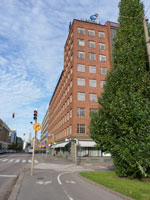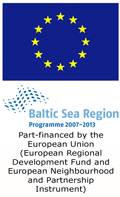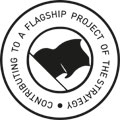12.-14.10.2011
Successful seminar and intensiv work in Helsinki, Finland
From 10th to 12th October 2011 the partners of the EU-Interreg IVB Baltic Sea Region project Co2olBricks met in Helsinki, Finland to compile their work of the last five months and to discuss the results with external experts, architects and planners during a one day seminar.
The seminar on 12th October 2011 was opened by Tommi Lindh from the Finnish Ministry of the Environment (YM), Department for the Built Environment / Living with an overview over the various words for built heritage or listed buildings and continued with insights into the development of the built stock in Finland mainly during the last 100 years and the future prospects.
Afterwards Kari Kolu, managing director of Renor ltd presented how his company refurbished an old factory to become a shopping centre, including a geothermal heating system.
Mr Wolfram Spehr of Schwan & Spehr Architects presented his experiences of wall tempering systems. These systems are said to save energy and therefore are systems applicable on the inside of buildings and thus not compromising the outer facade.
Finally Mr Prof. Ola Wedebrunn gave an overview over the long tradition of brick buildings and how it is used in many ways through the centuries up to our days also in modern buildings.
The seminar took place during the regular meeting of the project Co2olBricks when the partners met to discuss the interim results of the three baseline studies that are currently under preparation in the work packages.
The first one is the work package “Policy Development” where the legal and the legislative situation are investigated in order to assess how this situation can be influenced by the project.
In the work package “Technical Innovations” the currently normal practice of energy efficiency refurbishments have been collected. The main result is that in no country the real energy consumption of a building is assessed but only based on calculated values. So it is rather unknown how much energy the listed buildings are actually consuming and hence their actual faction of the overall energy consumption of the built stock is unknown. And it is hence unknown how much can actually be saved by the historic buildings. Because in Co2olBricks our focus are the brick walls, the question is, how much energy is lost e.g. through the walls. This will be investigated in the coming research activities in this work package.
In work package “Education and Economic promotion” the draft results of the baseline study of the educational situation in the Baltic States was presented and during the work shop in discussion rounds a questionnaire about the labour market of heritage preservation, especially for craftsmen and planners, was developed and will be sent out to the project partners to be answered.
During an excursion to two government buildings from the beginning of the 20th century and a university building from the 1960ies the participants got an insight into the contemporary way of refurbishment of historic buildings in Finland.
The participants were very satisfied with the working results and are eager to meet the next time in Malmö in December 2011.
.
Presentation
Wall Tempering System - Schwan & Spehr Architects - PDF, 2.1 MB





